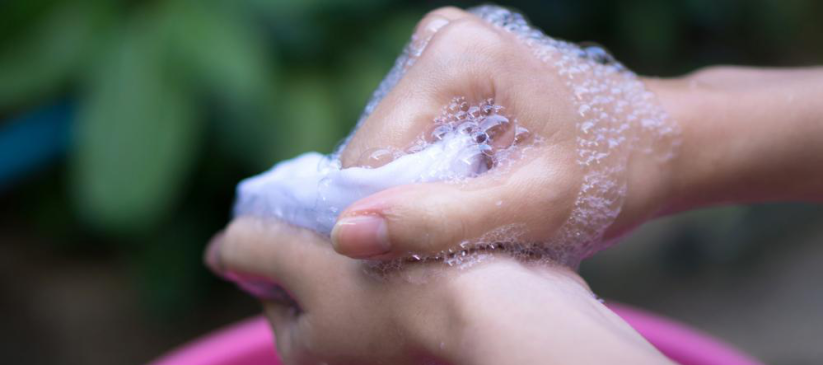The Chemistry of Stain Removal
The Chemistry of Stain Removal
Plop.
That’s the unwanted sound of sauce dropping on your brand new clothes as you devour a plate of mouthwatering meatballs and spaghetti. It’s okay, it happens to the best of us; losing track of everything when chowing down on some really good food.
From food spills to grass and grease, stains are a pesky annoyance that can be hard to deal with.
Let’s take a look at the science behind stain removal to really understand how the process works.

Stain Formation
Stains primarily form when a substance is spilled onto a surface and the molecules are trapped inside the fibers and pores of the material. The spilled substance coats the underlying material and the newly formed stain reflects back light of its own color, which is how the stain becomes visible to the naked eye.
Sometimes, application of extreme heat, such as during ironing, can cause a chemical reaction in which a removable stain turns into a chemical compound that is near impossible to get rid of.
There are many stain removal methods which use different techniques.
Dissolving Stains
Most stain removers contain chemical solvents that help dissolve stain-based chemicals. The general rule is that ‘like dissolves like,’ which means that using a solvent that is similar in chemical composition to the stain can dissolve it faster. So, if you have an oil-based stain, an alcohol solvent works; water-based solvents can be removed with soapy water or club soda.
Emulsifying Stains
Stain removing agents also contain surfactants or emulsifiers. In the process of emulsification, a surfactant is used to cover the stain which helps it lift off the surface. They help the fluids spread faster which makes it easier for the stain to be removed. Some common emulsifiers are soap and sulfonates. They can remove both oily and watery stains.

Breaking Up Stains
Some stain removers make use of enzymes that break apart the stain molecules. These protein-based enzymes digest stains in a similar way to how they digest and break down food molecules. Oxidizers like borax and peroxide also help break apart molecules.
Hiding Stains
Many stain removal agents also contain whiteners that don’t clean but rather hide the stains. Oxidizers, such as bleach, render stains invisible to the eye by oxidizing the stain molecule colorless. Some stain whiteners can cover up stains and make them less noticeable by reflecting back light.
Do you need any help getting a tough stain out of your well-worn clothes? Contact us at Imperial Valet, we offer dry cleaning and wash and fold laundry services in Washington, DC. Call us now on (202) 785-1444.

